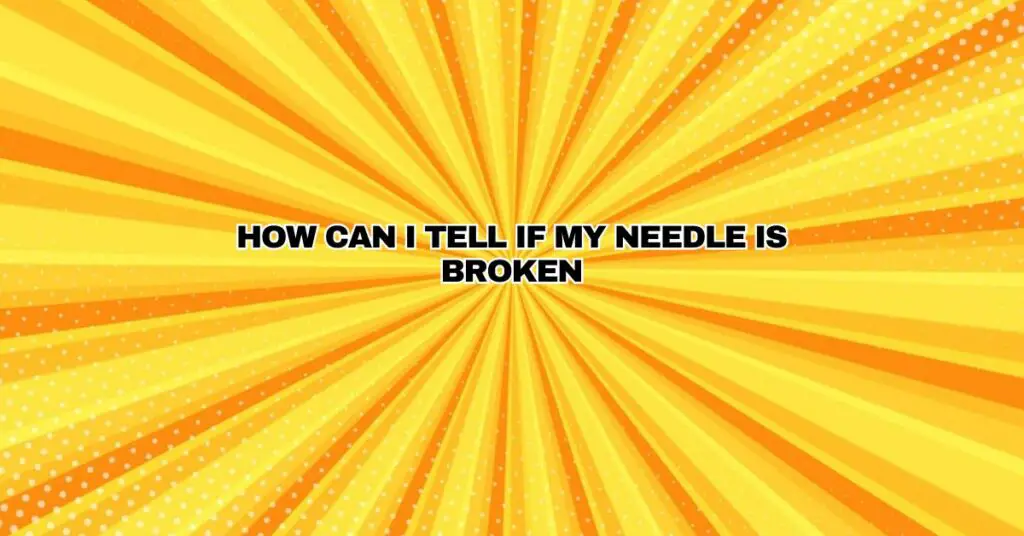The needle, or stylus, on a turntable is a crucial component for accurate and high-quality playback of vinyl records. A damaged or broken needle can not only diminish the sound quality but also harm your records. In this comprehensive article, we will discuss how to identify if your turntable needle is broken or in need of replacement, and the steps to take if you suspect that it is.
1. Listen for Audible Clues:
The most direct way to determine if your turntable needle is broken or worn is to listen for audible clues while playing a record. Here are some signs that may indicate a problem with the needle:
- Distorted Sound: If you notice distortion, crackling, or unusual noise during playback, it could be a sign of a damaged needle. The stylus may be unable to track the grooves of the record correctly, resulting in audio artifacts.
- Skipping or Jumping: If the needle jumps or skips across the surface of the record, it may indicate a tracking issue or a problem with the stylus. This can also occur if the needle is bent or damaged.
- Inconsistent Sound: Uneven sound quality, such as fluctuations in volume or tone, might be due to a damaged needle. It can lead to an imbalanced audio experience.
- Loss of High Frequencies: A worn or broken stylus may result in a loss of high-frequency details in the music, making the sound dull or muffled.
2. Visual Inspection:
A close visual inspection can often reveal whether the needle is broken or worn out. Here’s what to look for:
- Bent or Misaligned Needle: Check if the stylus is visibly bent or misaligned. Even a slight misalignment can impact playback.
- Wear and Tear: Examine the stylus tip under good lighting. Look for visible signs of wear, such as a flattened or damaged tip. A worn-out stylus may have a flat or chiseled appearance instead of a sharp point.
- Debris or Damage: Inspect the stylus for any foreign debris or damage. Dust, dirt, and grime can accumulate on the needle, affecting playback.
- Needle Tip Color: Some stylus tips are colored differently to indicate their condition. A bright, shiny stylus tip is often a sign of a new and healthy needle. A worn stylus may appear discolored or dull.
3. Check the Tracking Force:
The tracking force is the downward pressure exerted by the stylus on the record. An incorrectly adjusted tracking force can cause premature wear or damage to the needle. Consult your turntable’s user manual or specifications to ensure that the tracking force is set correctly. If you find that it’s significantly off, it might have caused damage to the needle over time.
4. Time and Usage:
The lifespan of a turntable needle depends on various factors, including the quality of the needle, the type of records you play, and how often you use the turntable. A typical diamond-tipped stylus can last anywhere from 500 to 1000 hours of playback. If you’ve been using the same needle for an extended period, it’s a good idea to consider replacement, even if you don’t notice immediate issues.
5. Test with Different Records:
If you suspect that your needle might be damaged, try playing different records from various genres and eras. If the issues persist across multiple records and music styles, it’s more likely that the needle is the problem.
6. Consult a Professional:
If you’re unsure about the condition of your needle or are experiencing playback issues, it’s advisable to consult a professional audio technician or a specialist in turntable maintenance. They can provide a thorough evaluation and recommend whether a replacement is necessary.
7. Regular Maintenance:
To prolong the life of your turntable needle and maintain audio quality, it’s essential to practice proper maintenance. This includes keeping your records clean, ensuring that the turntable is correctly calibrated, and regularly cleaning the stylus to prevent the accumulation of debris.
In summary, a broken or worn turntable needle can significantly impact your listening experience and potentially damage your vinyl records. If you suspect that your needle is damaged, look for audible and visual clues, check the tracking force, and consider the needle’s age and usage. If in doubt, seek professional advice or consider replacing the needle to ensure the continued enjoyment of your vinyl record collection.


